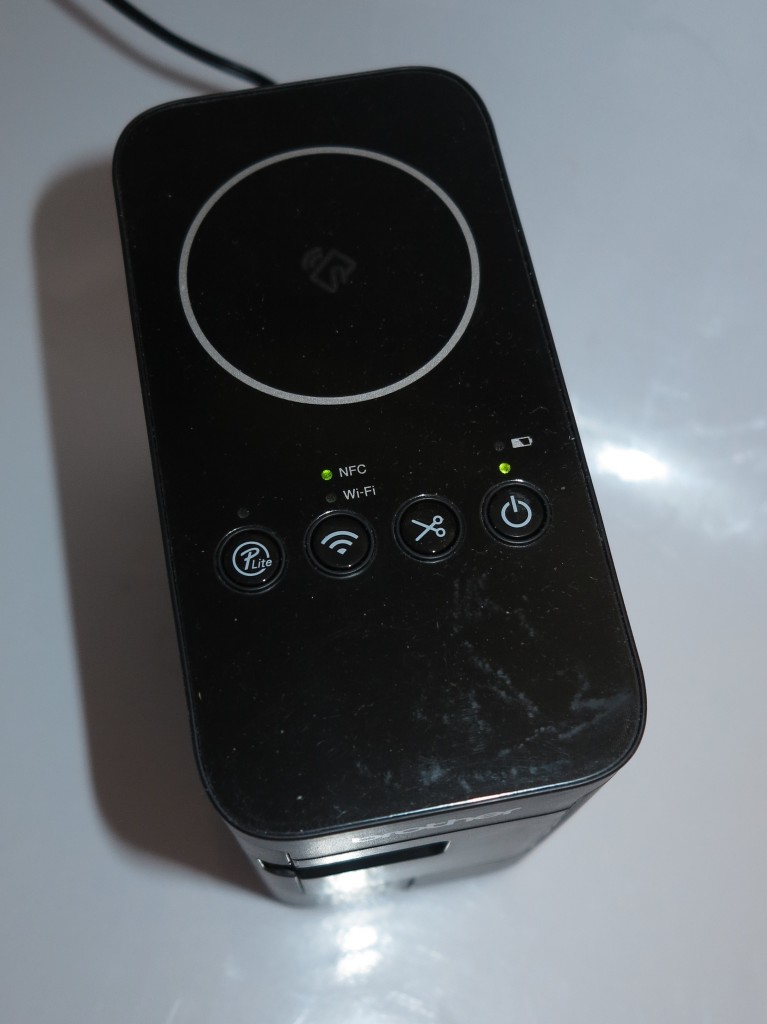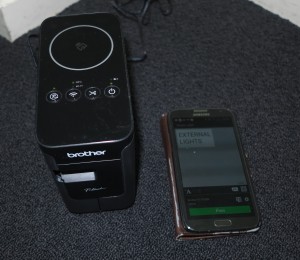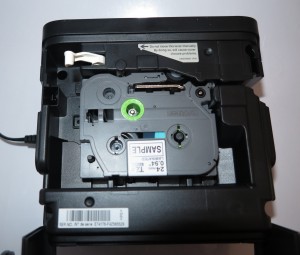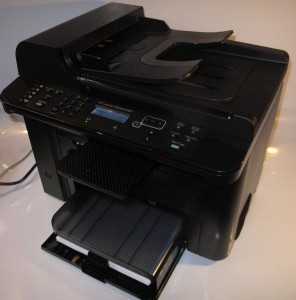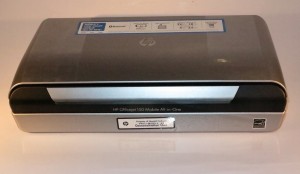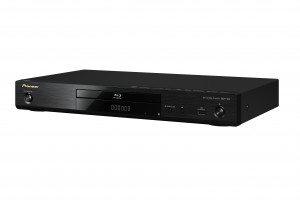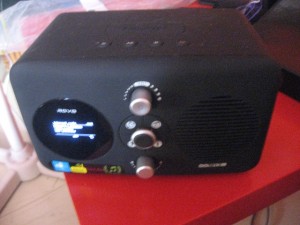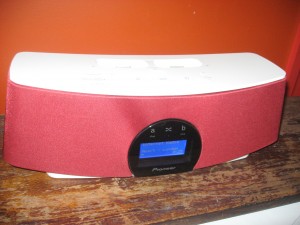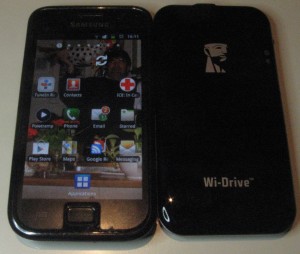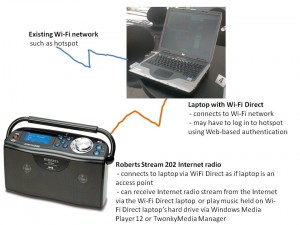Product Review–Brother PT-P750W Wireless Label Printer
Introduction
I am reviewing the Brother PT-P750W Wireless Label Printer which is the first portable label printer to be designed to work with smartphones and tablets.This is brought about using integrated Wi-Fi wireless network connectivity with Wireless-Direct (own access-point) operation along with the ability to work with a mobile-platform label printing app.
Price (Printer unit): AUD$249
The printer itself
The Brother PT-P750W Wireless Label Printer has “three-way” power where it can work from AC power via a supplied AC adaptor, 6 AA batteries or an optional rechargeable battery pack. If you run it on the AA batteries, you can only connect to it using the USB cable which limits its printing abilities to laptop computers or tablets running the “regular” Windows or MacOS X operating systems.
It uses the TZe series of P-Touch thermal label tapes which snap in to the Brother labeller in a manner not dissimilar to an audio cassette tape. Here, you have a wide variety of label tapes that can suit the different situations ranging from coloured labels through tamper-evident labels even to waterproof labels.
Connectivity
This machine can be connected directly to a regular computer via the USB cable or can be connected to regular computers or mobile computer devices via an existing Wi-Fi network segment or Wi-Fi Direct link. This includes the ability for Android phones that have an NFC connection and the Brither iPrint&Label app to “touch and go” for printing. As for the existing Wi-Fi segments, this can work with small networks that implement pre-shared key methods like WEP or WPA-PSK or can sign in to enterprise networks with a username and password. In these situations, if the network segment doesn’t implement WPS “push-to-connect” functionality, you have to use a regular computer running Brother’s “Printer Setting Tool” which you download from Brother’s Website and connect the printer to the computer via a USB cable to supply to the printer the parameters for the Wi-Fi segment you intend to have this printer work with.
This network functionality can only work if the printer is connected to AC power or the optional lithium-ion rechargeable battery pack. As well, it doesn’t implement the web-based “own-access-point” Wi-Fi setup that is common of a lot of wireless devices for integration with existing Wi-Fi segments. This may not be an issue with those of you who would keep this machine in the back of the van, ready to turn out labels as needed. If you have a device that doesn’t support NFC “touch-and-go” connectivity, you just need to turn on Wi-Fi and the printer will go in to Wi-FI Direct mode if it isn’t connected successfully to the
If you are printing from your smartphone or tablet, you would need to use the Brother iPrint&Label app to turn out the labels. This app worked well with my Samsung Android smartphone and it didn’t take long for me to link the smartphone up directly to this device and turn out a test label. It worked very well with a clean easy-to-use interface that allows you to get the job done.
Personally, I would have liked this app to support the ability for one to supply network connectivity information to the printer using that app’s interface as well as being able to print direct. Using a flashing Wi-Fi light to indicate Wireless Direct can have us think that something is going wrong even though the steady NFC light to indicate connection can lead to operator confusion. Rather, I would implement a dual-colour LED for the Wi-Fi light to indicate “infrastructure connection successful” in green and “Wireless Direct connection successful” in red or yellow. As well, have the light flash during connection establishment.
Label Quality
The labels have come out of the Brother PT-P750W labeller very crisply and clearly even when I have used the iPrint&Label app. The app even implemented “right-sized” labelling to fit multiple-line text on the same piece of tape.
Usage Notes
 I used this device at the church I attend to help one of the men who is a licensed electrician and does the AV and electrical work for that congregation to turn out a label for the external-lighting switch. Here, I found that the Brother PT-P750W “tries” for my home network and doesn’t immediately fall over to Wireless Direct behaviour every time it is powered up. Personally, I would like to have a switch on the unit that enforces Wireless-Direct as an operation mode there and then, in a similar way to some of the Pioneer wireless speakers that have a switch on the unit to enforce this mode, and this mode is highlighted by the Wi-Fi light changing to a different colour to indicate “independent” wireless-network operation.
I used this device at the church I attend to help one of the men who is a licensed electrician and does the AV and electrical work for that congregation to turn out a label for the external-lighting switch. Here, I found that the Brother PT-P750W “tries” for my home network and doesn’t immediately fall over to Wireless Direct behaviour every time it is powered up. Personally, I would like to have a switch on the unit that enforces Wireless-Direct as an operation mode there and then, in a similar way to some of the Pioneer wireless speakers that have a switch on the unit to enforce this mode, and this mode is highlighted by the Wi-Fi light changing to a different colour to indicate “independent” wireless-network operation.
The man’s wife was intrigued by the way the Brother PT-P750W operates with a smartphone like his iPhone so as to make better use of that phone through the day. I had explained to the man how the device worked where he used his iPhone or iPad to label switches and outlets and he was even approaching me regarding how much it cost.
Limitations and Points Of Improvement
An accessory that may be nice to have and may gain traction with this device’s target market would be a DC power adaptor. This would plug in to a vehicle’s cigar-lighter socket to allow this unit to be powered or charged from the vehicle’s 12-volt circuitry. Here it would earn its keep with those of us who work out of the back of a van by allowing us to charge the Brother label printer’s rechargeable battery while we are driving between jobs or locations, or have the unit working with the full wireless abilities and printing from our smartphones when we are preparing labels in the back of the van but without needing to have the optional rechargeable battery or compromising the battery’s runtime.
Another accessory that Brother could supply, whether “in the box” or as an optional extra, is a matching fitted carry-bag or road-case for this printer where the printer, its AC adaptor, a USB cable and a few label cassettes can be kept safely while it is taken “on the road”. Here, it also provides a single known place for the machine and these accessories so you don’t lose anything easily as you take it between locations.
As I have said before. the Brother software could support the ability to use one of their labellers to create a calibrated measuring tape. This could come in handy when you want to make a surface become a reference for measuring an item’s length or height.
Conclusion
I would pitch the Brother PT-P750W at electricians and other tradesmen along with maintenance departments who place value on using a smartphone or tablet to turn out labels as part of the job. The fact that it can work as its own Wi-Fi wireless segment as well as working with an existing Wi-Fi wireless network increases its portability even more because you don’t have to pair your mobile device or this printer with an existing Wi-Fi wireless network.
For that matter, I would see this machine as a viable tool rather than a toy. If you are intending to use the Brother PT-P750W Wireless Label Printer “on the road”, I would recommend that you purchase the rechargeable battery pack and have this set up for Wireless Direct exclusively for a truly portable setup with your mobile device.

